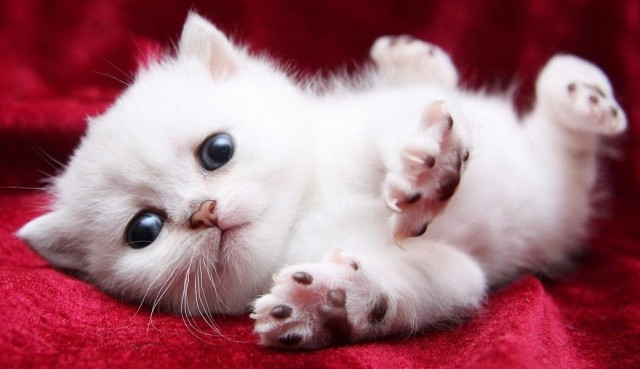New born kittens need a lot of care and attention from both the mother and the owner. If you are inexperienced, learn how to take care of a newborn cat safely and properly through the article below.

How to take care of a newborn cat: Check the litter after giving birth
If the mother cat gives birth in a box / nest that you have prepared, remove the newspaper or litter lining and replace it with a new layer after the mother has finished giving birth to ensure maximum hygiene.
You also need to pay attention to the condition of the mother cat's nipples and vulva. Unusual conditions can include swelling, bleeding, strange smell, pus, and the placenta has not been discharged even after 48 hours. If you experience these conditions, call your veterinarian immediately.
How to take care of a newborn cat: Checking out the kittens after birth
Newborn kittens are extremely fragile and weak, so you need to be very careful when examining, do not shake or shake the kitten too hard, and it is best to pick them up gently and slowly from under the belly. .
If the mother cat is a new mother for the first time, you need to be extra vigilant and attentive. Check to see if the kitten is pushed away from its mother by its siblings, or pressed by the mother cat. You can arrange a "team" of kittens and should prioritize the lightest ones near the mother's hind legs, as that is where the most milk is produced.
How to take care of a newborn cat: REDLiving conditions of kittens after birth
1. About temperature
You need to make sure that the kitten's nest is warm enough because kittens cannot maintain body temperature for about 2 weeks after birth. If the mother cat is lying in bed, there is no problem, but if the mother leaves, you should be wary, because they may get cold.
For kittens:
- During the first week after birth: 85 -90°F (29.5-32°C).
- Temperatures will drop about 5 degrees per week, until it's 70°F (21.1°C)
If you find that the kitten is cold, increase the temperature in the cat's nest by using a heater, perhaps using a table lamp, for example.
2. Clean the cat litter regularly
The cat's nest is kept very clean, especially during the process of giving birth and raising children. You need to clean and change the paper / lining of the litter regularly to ensure the health of the mother and kittens.
If the mother cat refuses, "not interested" in that the nest you have arranged is very warm and beautiful for her, then you can fix it by placing the nest in a corner, or a dark, quiet place or Can cover with a layer of cloth/curtain to cover the nest. The mother cat will feel more secure when in these places.
How to take care of a newborn cat: Nutrition of a kitten after birth
In the first weeks of life, kittens only need to breastfeed, of course, except for babies who are too low weight, they need more special care. By week 3, they can begin to nibble on crushed food and you will need a more balanced diet to safely feed the kittens.
In the case of newborn kittens and the mother cat does not have enough milk, you can give the kittens milk through a syringe or bottle and after a while, they can eat more food.
Some general guidelines for dosage and frequency of eating when caring for newborn kittens:
- One to three days old: 2.5ml milk replacer every two hours
- Four to seven days old: 5ml milk replacer 10 to 12 times per day
- Six to 10 days old: 5 to 7.5ml milk replacer 10 times a day
- 11 to 14 days old: 10 to 12.5ml milk replacer every three hours
- 15 to 21 days old: 10ml eight times per day
- 21 days and older: 7.5 to 25ml, three to four times daily, with extra food.
Here is some information about How to take care of a newborn cat that we want to share with you. Wish you have healthy and lovely kittens. If you need to know more about other ways to take care of kittens, contact http://vanchuyenchomeo.com/ for advice.